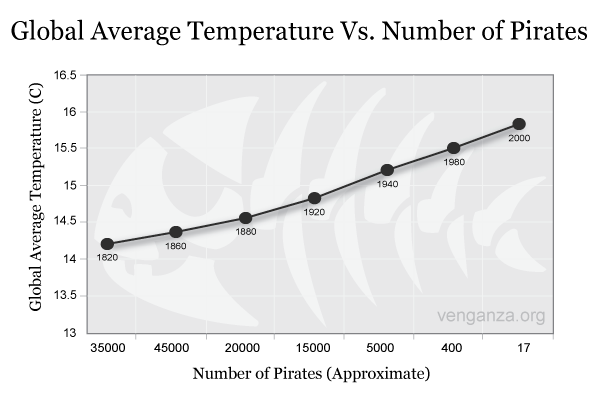class: center, middle, inverse, title-slide .title[ # <b>Week 5: Correlations</b> ] .subtitle[ ## Univariate Statistics and Methodology using R ] .author[ ### ] .institute[ ### Department of Psychology<br/>The University of Edinburgh ] --- class: inverse, center, middle # Part 1: Correlation --- # Brain Volume & Activity Level .center[ <!-- --> ] --- # Correlation .pull-left[ + A measure of the relationship between two **continuous** variables + Does a linear relationship exist between _x_ and _y_ ? + Specifically, do two variables **covary**? + A change in one equates to a change in the other ] --- count: false # Correlation .pull-left[ + A measure of the relationship between two **continuous** variables + Does a linear relationship exist between _x_ and _y_ ? + Specifically, do two variables **covary**? + A change in one equates to a change in the other + Does `\(y\)` vary with `\(x\)` ? + Equivalent to asking "does `\(y\)` differ from its mean in the same way `\(x\)` does?" ] .pull-right[ <!-- --><!-- --> ] --- count: false # Correlation .pull-left[ + A measure of the relationship between two **continuous** variables + Does a linear relationship exist between _x_ and _y_ ? + Specifically, do two variables **covary**? + A change in one equates to a change in the other + Does `\(y\)` vary with `\(x\)` ? + Equivalent to asking "does `\(y\)` differ from its mean in the same way `\(x\)` does?" ] .pull-right[ <!-- --><!-- --> ] --- count: false # Correlation .pull-left[ + A measure of the relationship between two **continuous** variables + Does a linear relationship exist between _x_ and _y_ ? + Specifically, do two variables **covary**? + A change in one equates to a change in the other + Does `\(y\)` vary with `\(x\)` ? + Equivalent to asking "does `\(y\)` differ from its mean in the same way `\(x\)` does?" + It's likely the variables are related **if observations differ proportionally from their means** ] .pull-right[ <!-- --><!-- --> ] --- # Covariance ### Variance .br3.white.bg-gray.pa1[ $$ s^2 = \frac{\sum{(x-\bar{x})^2}}{n} = \frac{\sum{(x-\bar{x})(x-\bar{x})}}{n} $$ ] ??? - note that here we're using `\(n\)`, not `\(n-1\)`, because this is the whole population -- ### Covariance .br3.white.bg-gray.pa1[ $$ \textrm{cov}(x,y) = \frac{\sum{(x-\bar{x})\color{red}{(y-\bar{y})}}}{n} $$ ] ??? - note that for any (x,y), `\(x-\bar{x}\)` might be positive and `\(y-\bar{y}\)` might be positive, so the covariance could be a negative number --- # Covariance .pull-left[ <!-- --><!-- --> ] .pull-right[ | `\(x-\bar{x}\)` | `\(y-\bar{y}\)` | `\((x-\bar{x})(y-\bar{y})\)` | |-------------------:|-------------------:|------------------:| | 1.5 | 0.73 | 1.095 | | 7.5 | 10.35 | 77.625 | | -5.5 | -8.95 | 49.225 | | -2.5 | 2.75 | -6.875 | | -1.5 | -3.73 | 5.595 | | 2.5 | 4.45 | 11.125 | | -3.5 | -4.95 | 17.325 | | 1.5 | -0.64 | -0.96 | | | | **154.16** | ] --- count: false # Covariance .pull-left[ <!-- --><!-- --> ] .pull-right[ | `\(x-\bar{x}\)` | `\(y-\bar{y}\)` | `\((x-\bar{x})(y-\bar{y})\)` | |-------------------:|-------------------:|------------------:| | 1.5 | 0.73 | 1.095 | | 7.5 | 10.35 | 77.625 | | -5.5 | -8.95 | 49.225 | | -2.5 | 2.75 | -6.875 | | -1.5 | -3.73 | 5.595 | | 2.5 | 4.45 | 11.125 | | -3.5 | -4.95 | 17.325 | | 1.5 | -0.64 | -0.96 | | | | **154.16** | $$ \textrm{cov}(x,y) = \frac{\sum{(x-\bar{x}){(y-\bar{y})}}}{n} = \frac{154.16}{8} = 30.83$$ ] --- # The Problem With Covariance .pull-left[ **Miles** | `\(x-\bar{x}\)` | `\(y-\bar{y}\)` | `\((x-\bar{x})(y-\bar{y})\)` | |------------:|------------:|-------------------------:| | -0.99 | -0.1 | 0.1 | | 3.22 | 1.78 | 5.73 | | 2.46 | 0.97 | 2.38 | | -2.65 | -1.31 | 3.47 | | -2.04 | -1.34 | 2.73 | | | | **14.41** | $$ \textrm{cov}(x,y)=\frac{14.41}{5}\simeq 2.88 $$ ] .pull-right[ **Kilometres** | `\(x-\bar{x}\)` | `\(y-\bar{y}\)` | `\((x-\bar{x})(y-\bar{y})\)` | |------------:|------------:|-------------------------:| | -1.6 | -0.16 | 0.25 | | 5.19 | 2.86 | 14.84 | | 3.96 | 1.56 | 6.16 | | -4.27 | -2.11 | 8.99 | | -3.28 | -2.15 | 7.06 | | | | **37.3** | $$ \textrm{cov}(x,y)=\frac{37.3}{5}\simeq 7.46 $$ ] ??? - these are exactly the same 'values' so they should each be as correlated as the other - so we need to divide covariance by something to represent the overall "scale" of the units --- # Correlation Coefficient - The standardised version of covariance is the **correlation coefficient**, `\(r\)` $$ r = \frac{\textrm{covariance}(x,y)}{\textrm{standard deviation}(x)\cdot\textrm{standard deviation}(y)} $$ -- .pt3[ $$ r=\frac{\frac{\sum{(x-\bar{x})(y-\bar{y})}}{\color{red}{N}}}{\sqrt{\frac{\sum{(x-\bar{x})^2}}{\color{red}{N}}}\sqrt{\frac{\sum{(y-\bar{y})^2}}{\color{red}{N}}}} $$ ] -- .pt1[ $$ r=\frac{\sum{(x-\bar{x})(y-\bar{y})}}{\sqrt{\sum{(x-\bar{x})^2}}\sqrt{\sum{(y-\bar{y})^2}}} $$ ] --- # Interpeting `\(r\)` `\(-1 \le r \le 1\)` ( `\(\pm 1\)` = perfect fit; `\(0\)` = no fit; sign shows direction of slope ) The sign of `\(r\)` gives you information about the direction of the relationship .pull-left.center[ <!-- --> ] .pull-right.center[ <!-- --> ] --- # Interpreting `\(r\)` The magnitude of `\(r\)` gives you information about the strength of the relationship .center[ <!-- --> ] --- class: inverse, center, middle # Part 2 ## Hypothesis Testing with Correlation --- # Sampling from the Population .pull-left[ <!-- --> ] --- count: false # Sampling from the Population .pull-left[ <!-- --> ] .pull-right[ <!-- --> ] --- # Sampling from the Population .pull-left[ <!-- --> ] --- count: false # Sampling from the Population .pull-left[ <!-- --> ] .pull-right[ <!-- --> ] --- # Hypothesis Testing + Does a linear relationship exist between _x_ and _y_ ? + `\(H_0:r_{population}=0\)` -- + **Two-tailed** + `\(H_1: r_{population}\neq0\)` + There is a significant relationship between brain volume and weekly activity. + As brain volume changes, weekly activity changes. -- + **One-tailed** + `\(H_1:r_{population}>0\)` OR `\(r_{population}<0\)` + As weekly activity increases, brain volume increases. + As weekly activity increases, brain volume decreases. --- # Significance of a Correlation + We want to know whether a correlation is **significant** + i.e., whether the probability of finding it by chance is low enough .pt2[ - Cardinal rule in NHST: compare everything to chance - Let's investigate by examining the range of _r_ values we expect from random data ] --- # Random Correlations + **Step 1:** Pick two random sets of numbers -- ```r x <- runif(10, min=0, max=100) y <- runif(10, min=0, max=100) head(cbind(x,y)) ``` ``` ## x y ## [1,] 1.223 14.537 ## [2,] 13.186 7.402 ## [3,] 13.800 45.028 ## [4,] 55.523 50.858 ## [5,] 19.738 36.407 ## [6,] 29.011 82.642 ``` -- + **Step 2:** Run a correlation ```r cor(x,y) ``` ``` ## [1] 0.6615 ``` -- + **Step 3:** Repeat. A lot. --- # Random Correlations + **Step 3:** Repeat. A lot. .pull-left[ ```r randomCor <- function(size) { x <- runif(size, min=0, max=100) y <- runif(size, min=0, max=100) cor(x,y) # calculate r } # then we can use the usual trick: rs <- data.frame(corrDat = replicate(1000, randomCor(5))) head(rs) ``` ``` ## corrDat ## 1 -0.42851 ## 2 -0.05464 ## 3 -0.70928 ## 4 0.80346 ## 5 -0.34746 ## 6 -0.08687 ``` ] -- .pull-right[ <!-- --> ] --- # Random Correlations + Extreme scores are less common, so the distribution narrows as more observations are added. .pull-left[ <!-- --> ] .pull-right[ <!-- --> ] --- # The _t_ distribution .pull-left[ <!-- --> ] .pull-right[ + The distribution of random `\(r\)`s is the `\(t\)` distribution, with `\(n-2\)` df + This formula computes the corresponding `\(t\)` statistic for the observed `\(r\)` value $$ t= r\sqrt{\frac{n-2}{1-r^2}} $$ - Allows you to calculate the probability of getting a value **equal to or more extreme than** `\(r\)` for sample size `\(n\)` by chance ] --- # Correlation in R + In R, you can get the correlation value alone: ```r cor(bvAl$weekly_actv, bvAl$brain_vol) ``` ``` ## [1] 0.6874 ``` + ...or you can get the full results from a `\(t\)` -test of your correlation: ```r cor.test(bvAl$weekly_actv, bvAl$brain_vol) ``` ``` ## ## Pearson's product-moment correlation ## ## data: bvAl$weekly_actv and bvAl$brain_vol ## t = 30, df = 998, p-value <2e-16 ## alternative hypothesis: true correlation is not equal to 0 ## 95 percent confidence interval: ## 0.6532 0.7188 ## sample estimates: ## cor ## 0.6874 ``` --- # Reporting Correlation Results .center[ <!-- --> ] "There was a positive relationship between weekly activity level and brain volume, `\(r(998)=0.69,p < .001.\)`" -- + **Note the lack of causal language!** + CANNOT SAY "An increase in weekly activity _leads to_ an increase in brain volume." --- # Pirates and Global Warming .center[ <!-- --> ] -- - Clear _negative_ correlation between number of pirates and mean global temperature - We need pirates to combat global warming --- # Simpson's Paradox .center[ <!-- --> ] - The more hours of exercise, the greater the risk of disease --- # Simpson's Paradox .center[ <!-- --> ] - Age groups mixed together - An example of a _mediating variable_ --- # Interpreting Correlation + Correlation does not imply causation + Correlation simply suggests that two variables are related + There may be mediating variables + Interpretation of that relationship is key + Never rely on statistics such as `\(r\)` without + Looking at your data + Thinking about the real world --- class: inverse, center, middle # Part 3 # Putting it all Together --- # Has Statistics Got You Frazzled? .pull-left[ <!-- --> ] .pull-right[ - We've bandied a lot of terms around in quite a short time - We've tended to introduce them by example - Time to step back... ] --- # What is NHST all about? ## **N**ull **H**ypothesis **S**tatistical **T**esting - Two premises 1. Much of the variation in the universe is due to _chance_ 1. We can't _prove_ a hypothesis that something else is the cause --- # Chance .pull-left[ - When we say _chance_, what we really mean is "stuff we didn't measure" - We believe that "pure" chance conforms approximately to predictable patterns (like the normal and `\(t\)` distributions) - If our data isn't in a predicted pattern, perhaps we haven't captured all of the non-chance elements ] .pull-right[ **Patterns attributable to** <!-- --><!-- --> ] ??? - we'll come back to looking at the patterns later on; essentially there is always going to be some part of any variation we can't explain --- # Proof .pull-left[ <!-- --> ] .pull-right[ - Can't prove a hypothesis to be true - "The sun will rise tomorrow" ] --- count: false # Proof .pull-left[ <!-- --> ] .pull-right[ - Can't prove a hypothesis to be true - "The sun will rise tomorrow" - _Just takes one counterexample_ ] --- # Chance and Proof .br3.pa2.bg-gray.white[If the likelihood that the pattern of data we've observed would be found _by chance_ is low enough, propose an alternative explanation ] - Work from summaries of the data (e.g., `\(\bar{x}\)`, `\(\sigma\)`) - Use these to approximate chance (e.g., `\(t\)` distribution) -- + Catch: we can't estimate the probability of an exact value (this is an example of the measurement problem) + Estimate the probability of finding the measured difference _or more_ --- # Alpha and Beta - We need an agreed "standard" for proposing an alternative explanation + Typically in psychology, we set `\(\alpha\)` to 0.05 + "If the probability of finding this difference or more under chance is `\(\alpha\)` (e.g., 5%) or less, propose an alternative" -- - We also need to understand the quality of evidence we're providing + Can be measured using `\(\beta\)` + **power** = 1 - `\(\beta\)` + Psychologists typically aim for `\(\beta = 0.20\)` (i.e., a power level of 80%) + "Given that an effect truly exists in a population, what is the probability of finding `\(p<\alpha\)` in a sample (of size `\(n\)` etc.)?" --- class: middle background-image: url(lecture_5_files/img/nuts-and-bolts.jpg) .br3.pa2.bg-white-80[ # The Rest is Just Nuts and Bolts - Type of measurement - Relevant laws of chance - Suitable estimated distribution (normal, `\(t\)`, `\(\chi^2\)`, etc.) - Suitable summary statistic ( `\(z\)`, `\(t\)`, `\(\chi^2\)`, `\(r\)`, etc.) - Use statistic and distribution to calculate `\(p\)` and compare to `\(\alpha\)` - Rinse, repeat ] --- class: inverse, center, middle, animated, bounceInUp # End